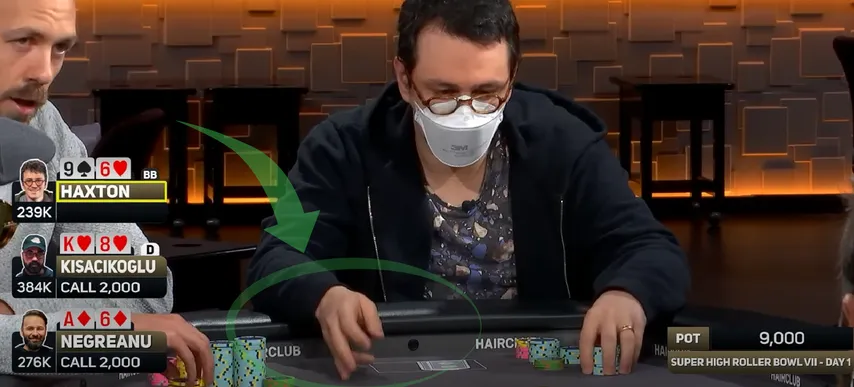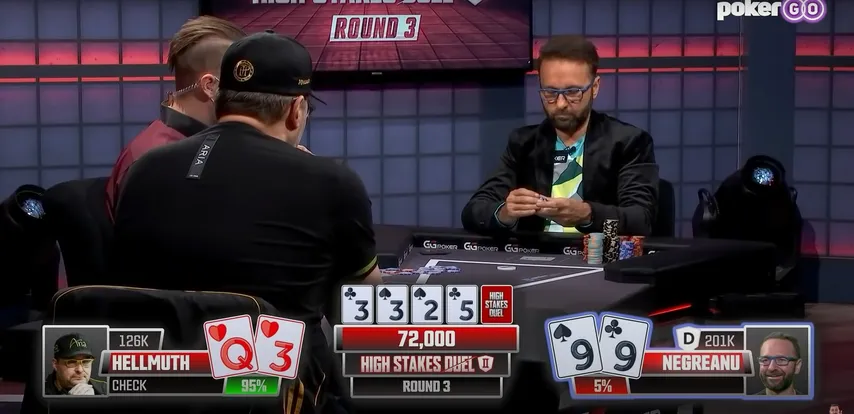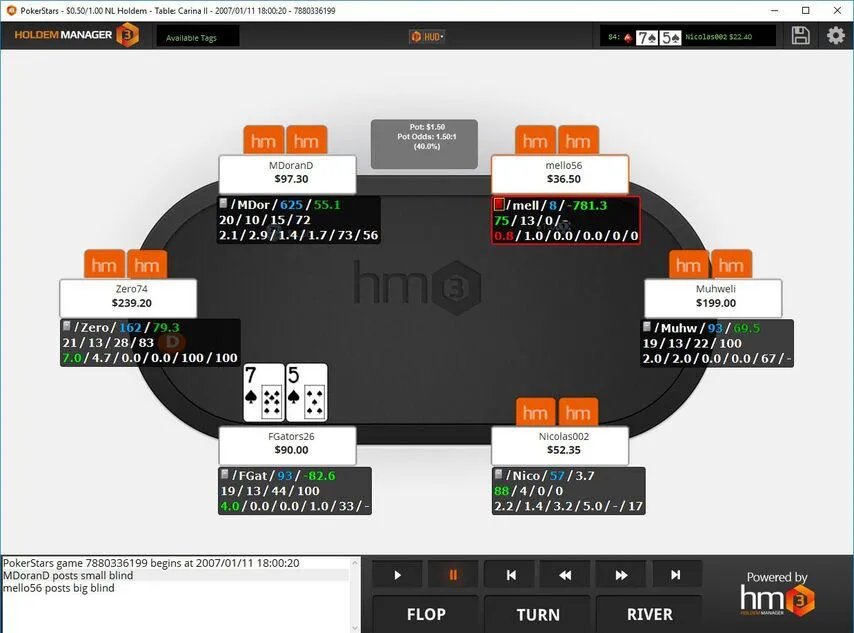During a hand of poker, players have a wide range of options. These start at folding, when the cards are thrown away, to going all-in and betting the entire stack of chips. There is another important tactical option that many people underestimate, and that is the check.
Let's figure out what this action means in poker, whether it always indicates a weak hand, and how to strategically use this move.

The Definition of a Check in Poker
What is a check in poker?
A check is one of the actions that you can’t always use. If a player makes a bet, that is one situation where you don’t have the option to check. In this case, you must fold, call, or raise, and checking is not available.
Essentially, a check means skipping to the next player, remaining in the hand, and not adding any money into the pot.

When can you check in poker?
A check is only possible when there have been no increases before you. Preflop, only the big blind has the opportunity to check. If there is a raise before it gets to the big blind, they can’t check.
How Do You Check in Poker?
Let’s quickly cover how to check in poker.
In online poker rooms, there are two ways to check – but only one of them is advisable. Of course, you can click the check button at your online table; that’s the first way. If you timeout at cash games or tournaments when you aren’t facing a bet, you will automatically check.
- Increased first deposit bonus
- Increased rakeback and reloads
- Help with deposits and cashouts
- Access to private freerolls
- Round-the-clock support
In live games, you can check by announcing it, or tapping your hand on the table twice. Some players tap chips or even tap the leather edge of the table – the important thing is that you make your intention clear. If a new player isn’t thinking about what their hands are doing, they might accidentally check by fidgeting.
We’ll start talking more about check strategy now, but if you need to brush up on poker rules, we’ve written a great article for you.
Strategy of Checking in Poker
A check is not always a sign of weakness. Sometimes, this technique is used to gain a competitive advantage. For example, you might check to view a free card and gain power on the next street.
Let’s look at several classic check moments and terms:
- Preflop
Preflop checking is slightly different from checking on other streets, since there are already two mandatory bets on the table (the blinds). Checking preflop is only possible in the position of the big blind – if no one raises. Every other position must call, raise, or fold their hand.
- Check-behind
“Checking behind” is for a player in position. Suppose nobody bet on the flop, meaning that the last participant in the hand has the option. They have several choices: pass, check, or raise.
If they decides not to put any chip in the middle, the player can check, behind the other players.
- Check-fold
The check-fold happens quite often when we miss the board and have no incentive to bet. In this case, we often let go of our cards after a check – hence the move’s name, “check-fold”.
A check-raise is non-standard, since it is a cunning trap that slams shut once an opponent raises. Sometimes, betting right away will scare aggressors away. Instead of that, we can choose to check. The aggressor bets, and instead of passing or calling, we announce a raise. This is a good technique, but it requires experience to implement correctly.

Want to Improve Your Postflop Poker?
Poker is a game that requires constant improvement of skills. It is easier to master the game preflop and starting hand range charts will help beginners with this.
Postflop is a much more complex process. There are so many actions, creative lines to take, and manipulative moves to make. With such freedom of choice and strategy, you’ll need to develop skills.
- Play more freerolls
How can you gain experience at the poker table? The simplest and most effective way is to train in combat conditions, meaning, at a poker table.
A freeroll is a different kind of MTT battleground. Buy-ins cost nothing, so the first levels will be volatile and full of aggressive play. By the later stages, you’ll feel that the standard of play raises as players start to feel their proximity to prizes.
The great thing about these free tournaments (besides being free) is that they run frequently. On sites like partypoker, freerolls run hourly and have guarantees of up to $400. You could easily run these tournaments alongside your regular cash games or other tournaments.
- Work with poker software
Poker software provides an incredible number of opportunities to improve your own game. Some players think that working with poker tools might be too complicated or that they won’t translate into profit. If that were true, we wouldn’t hear leading professionals rant on and on about the benefits of these programs.
The truth is that poker has modernized.To be modern competitors, we install heads-up displays for extra information, think in terms of ranges (not singular hands), and use solvers for more optimality.
Many useful programs are in the GipsyTeam Shop at the moment and we constantly update to the latest firmware.

One of the HUDs we should highlight is Holdem Manager 3, a serious tool for winning games.
Users get a detailed HUD at the tables, but it’s not just a heads-up display. In the replayer, you can analyze your own hands and improve step by step. Work on your issues, from generalized leaks to minor ones. HM3’s filters will help you identify all of them.































